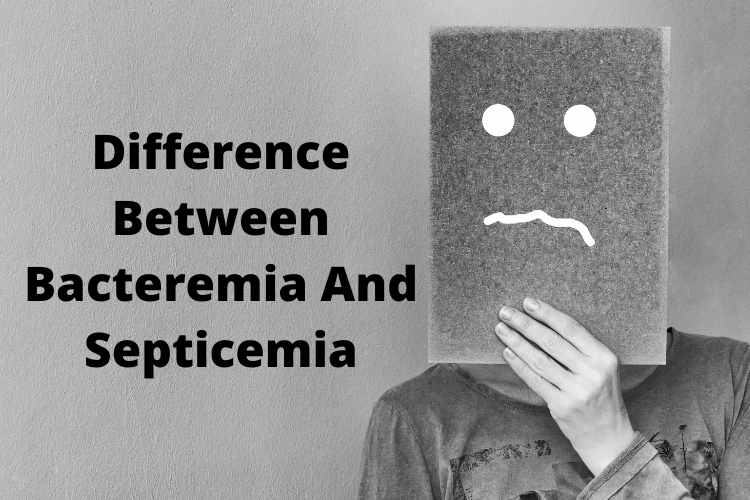What is the Difference Between Bacteremia And Septicemia ?
Bacteremia and Septicemia are often mixed together. Although bacteremia and Septicemia are sometimes used interchangeably, they are different concepts. Bacteremia is a word that describes the presence of bacteria in a person’s blood. while the presence and growth of bacteria in the blood are referred to as septicemia. Compared to bacteremia, septicemia is more severe and life-threatening. Here is the detailed difference between Bacteremia And Septicemia.
Read: Difference Between Vegan Protein and Whey Protein?
What is Bacteremia?
Bacteremia is a bacterial infection of the blood or the presence of live bacteria in the bloodstream in the strictest sense. It is typically not harmful and does not necessitate treatment. Bacteremia frequently manifests itself without causing any signs or symptoms and resolves without any treatment. In this instance, a tiny number of germs are detected and eliminated by the body on its own. If your body’s immune system is strong, there is no need to worry.
Bacteremia can sometimes develop into a severe illness known as septicemia or sepsis. This can happen as a result of a wound or infection, or as a result of a surgical operation or injection. Staphylococcus, Pseudomonas, Streptococcus, Haemophilus, dental operations, herpes (including herpetic whitlow), E. coli,urinary tract infections,Clostridium difficile colitis, peritonitis, intravenous drug use, and colorectal cancer are all factors that cause it.
Symptoms of Bacteremia
Fever and chills
Trouble breathing or fast breathing
Fast heart rate.
Feeling lightheaded or faint
Loss of appetite
Nausea or vomiting
Skin rashes or blotches
Confusion, severe sleepiness, or loss of consciousness
A blood culture test is used to diagnose Bacteremia. A sample of blood is submitted to a lab to be checked for the presence of bacteria.
Read: Difference Between Delta and Mu Variant
What is Septicemia?
It is a potentially fatal infection or complication caused by germs entering and multiplying in the circulation. Septicemia is a serious sickness that can kill you. It can be caused by infections in any part of the body, including the lungs, abdomen, and urinary tract. The blood contains a large number of microorganisms. The presence of Systemic Inflammatory Response Syndrome (SIRS) with a known source of infection. It’s the medical term for blood poisoning. Septicemia can swiftly develop into sepsis if left untreated. The bacterial infection that is causing septicemia will be treated with antibiotics. More than half of all instances of sepsis are considered to be caused by staphylococci. Streptococcus pyogenes, Pseudomonas aeruginosa, Escherichia coli,Klebsiella species, and even Candida spp. are all often implicated microorganisms.
Read: Difference Between Covid Toes and Gout
Symptoms of Septicemia
Breathlessness or breathing very fast
Fever and chills
Very low body temperature
Difficulty in breathing (grunting noises)
Diarrhea
Inadequate blood flow
Fatigue or weakness
Peeing less than usual
Flushing
Dizziness
Shock
Blotchy, pale or discolored skin
Mental confusion
Fast heartbeat
Nausea and vomiting
Septicemia is diagnosed through test on multiple types of fluids like Blood, Skin sores and wound secretions, Urine and respiratory secretions. Other ways to diagnose the problem are X-ray, MRI, CT scan and Ultrasound.
These are the things that differentiate these two terms, Bacteremia and Septicemia. We hope, we’ve cleared all the confusion through this blog.

